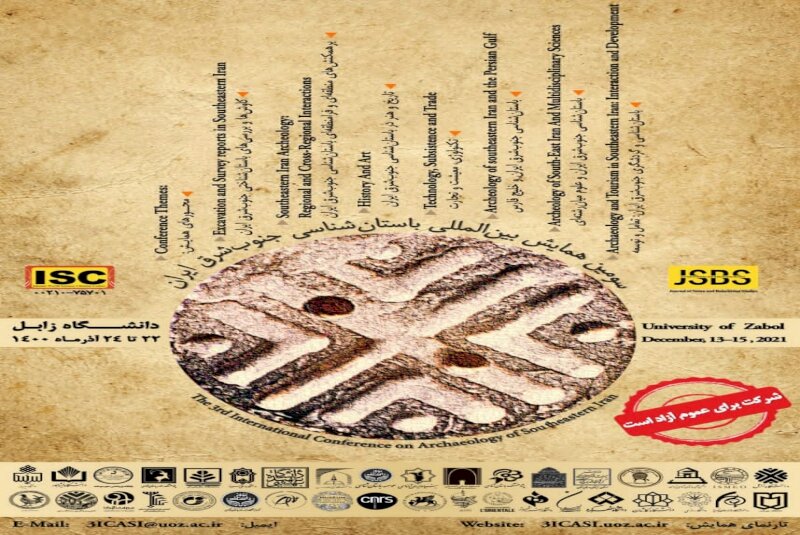Intl. experts to discuss archaeological achievements in southeast Iran

TEHRAN – A host of archaeologists, anthropologists, historians, and cultural heritage experts from Iran and across the globe have been invited to attend a virtual conference to discuss arrays of archaeological achievements in southeast Iran.
Titled “The 3rd International Conference on Archaeology of Southeastern Iran”, the event will be held from December 13 to 15 at the University of Zabol, which is located in the archaeologically-rich province of Sistan-Baluchestan.
According to organizers, the conference is set to address themes such as excavations and survey reports, regional and cross-regional interactions; history and arts; technology subsistence, and trade; archaeology through multidisciplinary sciences; as well as tourism, international interactions, and development.
Sistan-Baluchestan is home to several distinctive archaeological sites and natural attractions, including two UNESCO World Heritage sites, namely Shahr-e-Soukhteh (Burnt City) and Lut desert.
Archaeological achievements in Burnt City, which is currently the subject of excavation by a joint team of experts from Iran, Italy, and Serbia, is expected to be the highlight of the conference.
Spanning an area of 280 hectares, the site had extensive commercial, political, and social relations with other important cities in the region. Founded around 3200 BC, the city was populated during four main periods up to 1800 BC, during which time there developed several distinct areas within the city. These include a monumental area, residential areas, industrial zones, and a graveyard.
Previous rounds of excavations showed that the residents of Burnt City had great skills in weaving, creating fine arts such as decorative objects, stone carving, and pottery painting. Four civilizations have lived in the city which was burnt down three times and not rebuilt after the last fire. The world’s oldest animated picture, as well as the earliest-known dice, backgammon set, caraway seeds, and artificial eyeball, are among the most significant discoveries at the site.
According to UNESCO, diversions in watercourses and climate change led to the eventual abandonment of the city in the early second millennium. The structures, burial grounds, and a large number of significant artifacts unearthed there, and their well-preserved state due to the desert climate, make this site a rich source of information regarding the emergence of complex societies and contacts between them in the third millennium BC.
In ancient times, according to Encyclopedia Britannica, the Baluchistan region provided a land route to the Indus Valley and the Babylonian civilizations. The armies of Alexander the Great marched through Baluchistan in 326 BC on their way to the Hindu Kush and their return march in 325 experienced great hardships in the region’s barren wastes.
AFM
